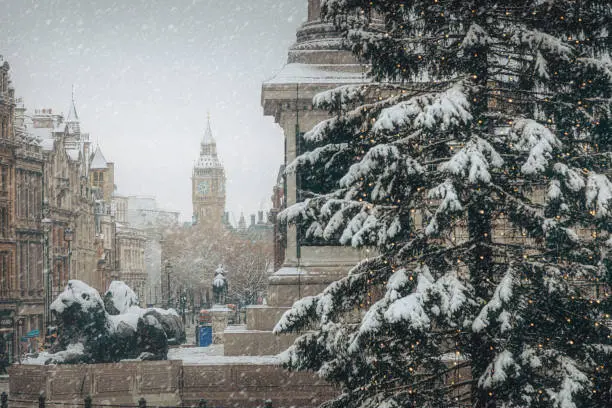Hyde Park, a vibrant neighborhood on the South Side of Chicago, is a treasure trove of history, culture, and natural beauty. Nestled along the shores of Lake Michigan, this area is not only known for its picturesque landscapes but also for its significant contributions to education, politics, and the arts. This article will explore the location of Hyde Park in Chicago, its historical significance, cultural landmarks, and what makes it a must-visit destination for both locals and tourists.
Hyde Park: An Overview
Hyde Park is one of Chicago’s 77 community areas and is located approximately 7 miles south of the Loop, the city’s central business district. It is bounded by:
North: 51st Street (also known as Hyde Park Boulevard)
South: The Midway Plaisance
West: Washington Park
East: Lake Michigan
This strategic location places Hyde Park at the intersection of nature and urban life, making it an attractive neighborhood for families, students, and professionals alike.
Historical Context
Hyde Park has a rich history that dates back to the mid-19th century. Originally developed as a suburban retreat for affluent Chicagoans seeking to escape the noise and congestion of the city, it was incorporated as an independent township in 1861. The neighborhood was annexed by Chicago in 1889.
The World’s Fair of 1893
One of the most significant events in Hyde Park’s history was its role in hosting the World’s Columbian Exposition in 1893. This world’s fair celebrated the 400th anniversary of Christopher Columbus’s arrival in the New World and showcased remarkable architectural achievements and innovations. Many buildings from this fair still stand today, including the Museum of Science and Industry.
Cultural Significance
Hyde Park has been home to many prominent figures throughout history, including former President Barack Obama. Obama lived in Hyde Park for many years and served as a law professor at the University of Chicago. The neighborhood’s political and cultural landscape has been shaped by its diverse population, which includes a significant African American community.
Getting to Hyde Park
Reaching Hyde Park from various parts of Chicago is convenient due to its well-connected public transportation system. Here are some options:
By Public Transit
Metra Train: The Metra Electric Line runs from downtown Chicago to Hyde Park. The closest station is the 57th Street station.
Chicago Transit Authority (CTA): Several bus lines serve Hyde Park, including routes that connect to the Red Line subway at 55th Street.
By Car
Driving to Hyde Park is straightforward, with several major roads leading into the neighborhood. Parking can be found on residential streets or in designated lots near popular attractions.
Exploring Hyde Park: Key Attractions
Once you arrive in Hyde Park, there are numerous attractions worth visiting:
University of Chicago
The University of Chicago is one of the most prestigious institutions in the world and serves as a cultural hub for the neighborhood. Its Gothic architecture and beautiful campus are perfect for a leisurely stroll. Notable sites within the university include:
The Smart Museum of Art: Offers free admission and features an impressive collection of art from various periods.
The Oriental Institute: A museum dedicated to ancient Near Eastern artifacts.
Robie House: A UNESCO World Heritage Site designed by Frank Lloyd Wright, showcasing his innovative Prairie School style.
Museum of Science and Industry
Located on the site of the 1893 World’s Fair, this museum is one of the largest science museums in the world. It features over 2,000 exhibits
that cover topics ranging from space exploration to energy conservation. Highlights include:
A real German submarine captured during World War II.
The Pioneer Zephyr train.
Interactive exhibits that engage visitors of all ages.
See Also: Where is Logan Square Located in Chicago
Jackson Park
Adjacent to Hyde Park, Jackson Park offers beautiful landscapes and recreational opportunities. It features:
Osaka Garden: A serene Japanese garden perfect for relaxation.
The historic Fountain of Time, which commemorates human progress.
Various walking trails and picnic areas along Lake Michigan.
Cultural Institutions
Hyde Park is home to several cultural institutions that celebrate art, history, and community engagement:
DuSable Black History Museum: The first museum dedicated to African American history in the United States.
Hyde Park Art Center: An alternative exhibition space that supports local artists through exhibitions and educational programs.
Court Theatre: A professional theater company known for its innovative productions.
Dining Options
After exploring Hyde Park’s attractions, take some time to enjoy its culinary offerings:
Valois Restaurant: Known as one of Barack Obama’s favorite breakfast spots, this diner offers classic American fare.
Virtue Restaurant: A Southern-inspired eatery led by a James Beard Award-winning chef.
Medici on 57th: A beloved local spot offering pizza, sandwiches, and desserts in a cozy atmosphere.
Community Events
Hyde Park hosts various community events throughout the year that celebrate its rich culture and diversity:
Hyde Park Jazz Festival: An annual event featuring performances from local and national jazz artists.
Chicago Book Expo: A gathering that showcases independent publishers and authors from around Chicago.
Seasonal farmers’ markets provide fresh produce and local goods while fostering community engagement.
Conclusion
Hyde Park is more than just a neighborhood; it’s a vibrant community steeped in history and culture. From its stunning architecture and prestigious university to its rich array of dining options and cultural institutions, there’s something for everyone in this unique part of Chicago.
Whether you’re visiting for a day or planning an extended stay, exploring Hyde Park offers insights into both the past and present of this remarkable city. With its welcoming atmosphere and diverse offerings, Hyde Park stands out as one of Chicago’s most cherished neighborhoods—a place where history meets modernity amidst beautiful surroundings. As you embark on your journey to discover where Hyde Park is located within Chicago’s vast landscape, remember that it’s not just about reaching your destination; it’s about immersing yourself in all that this incredible neighborhood has to offer!
Related Topics:
What Do I Need to Travel to Menorca from the UK
How to Go to Oxford University from London
Where Is Roscoe Village in Chicago

